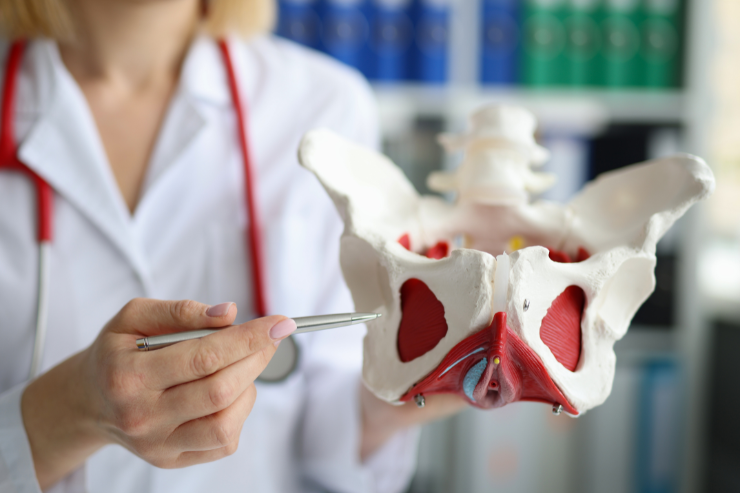Pelvic Organ
- Home
- Treatments
- Pelvic Organ

Pelvic Organ Prolapse is a condition where the pelvic organs—such as the bladder, uterus, or rectum—fall or bulge into the vaginal canal due to weakened pelvic support structures. At Dr. Rupa Pandra, expert care is provided for pelvic organ prolapse to enhance your comfort and quality of life.
What is Pelvic Organ Prolapse?
Pelvic organ prolapse occurs when the muscles and tissues supporting the pelvic organs become weakened, often due to childbirth, aging, or other factors. This weakening allows the organs to descend from their normal position and protrude into the vaginal canal, potentially leading to a range of symptoms and discomfort.
Common Symptoms
Symptoms of pelvic organ prolapse can vary based on the type and severity of the prolapse. Common symptoms include:
- Pelvic Pressure or Heaviness: A sensation of pressure or fullness in the pelvic area, sometimes described as a bulging feeling.
- Vaginal Bulging: Visible or palpable bulging through the vaginal opening.
- Urinary Issues: Problems such as frequent urination, urinary incontinence, or difficulty fully emptying the bladder.
- Bowel Problems: Symptoms like constipation, difficulty with bowel movements, or a feeling of incomplete bowel evacuation.
- Discomfort or Pain: Pain or discomfort during sexual intercourse or in the pelvic region.
- Increased Symptoms with Physical Activity: Symptoms that worsen with prolonged standing, lifting heavy objects, or strenuous activities.
Types of Pelvic Organ Prolapse
Pelvic organ prolapse can affect different pelvic organs, and its presentation may vary:
- Cystocele: Prolapse of the bladder into the anterior wall of the vagina, leading to urinary symptoms.
- Rectocele: Prolapse of the rectum into the posterior wall of the vagina, causing bowel issues.
- Uterine Prolapse: Prolapse of the uterus into the vaginal canal, which can impact the vaginal walls and bladder.
- Enterocele: Prolapse of the small intestine into the upper vaginal wall, often presenting with a bulging feeling.
Diagnosis
To diagnose pelvic organ prolapse, specialists at Dr. Rupa Pandra use a combination of methods:
- Pelvic Examination: A thorough physical exam to assess the position of the pelvic organs and identify any prolapse.
- Ultrasound: Imaging to visualize the pelvic organs and support structures.
- Urodynamic Testing: To evaluate bladder function and diagnose related urinary issues.
Treatment Options
Treatment for pelvic organ prolapse is customized based on the severity of the condition and the patient’s overall health. Options include:
- Lifestyle Changes: Incorporating pelvic floor exercises (like Kegels) to strengthen the pelvic muscles and alleviate symptoms.
- Pessary Devices: A device inserted into the vagina to support the prolapsed organs and relieve symptoms.
- Surgical Treatment: For more severe cases, surgical options may be necessary, including:
- Anterior or Posterior Repair: Procedures to repair the vaginal walls and support the bladder or rectum.
- Hysterectomy: Removal of the uterus if uterine prolapse is present and other treatments are ineffective.
- Surgical Mesh: Sometimes used to support weakened pelvic tissues and prevent recurrence.
Prevention and Support
Preventing pelvic organ prolapse involves maintaining a healthy lifestyle, practicing pelvic floor exercises, and avoiding excessive strain. Dr. Rupa Pandra’s team provides comprehensive education and support to help manage the condition and reduce the risk of future issues.
